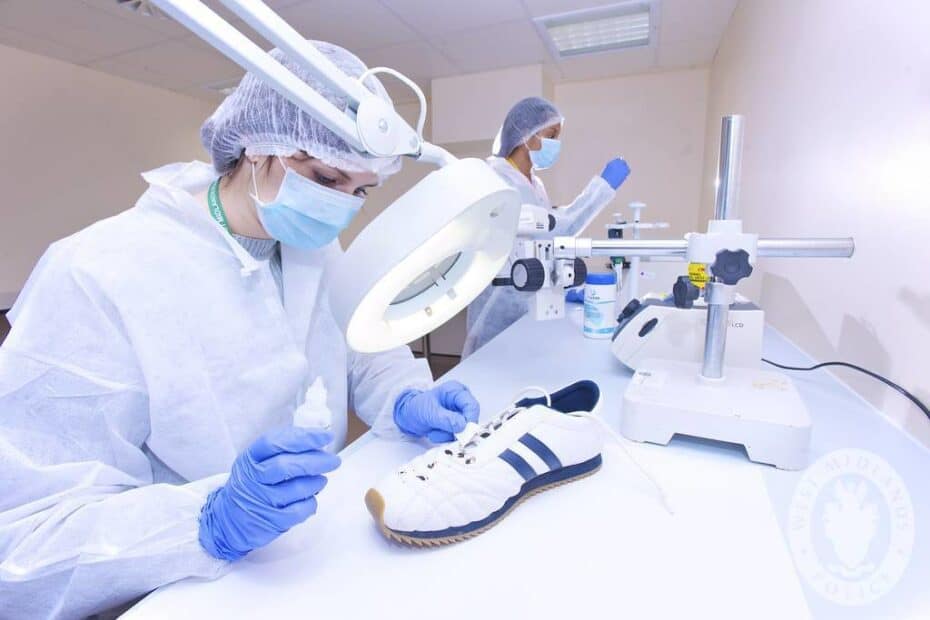You’ve probably seen police officers on TV talk about “rape kits.” This is an exam to find evidence of rape or other sex crimes. Medical forensic assessments are the technical term for these exams. They are widely used in both civil litigation and criminal cases. What are these exams, and why are they so important in legal cases?
What is a Medical Forensic Assessment?
A medical forensic assessment or MFE (medical forensic exam) is performed right after a sexual assault or up to four or five days later. The time limit varies by state, but evidence quickly degrades after about 96 hours. A patient’s consent is always needed before an MFE. The following are the typical aspects of the exam.
- A review of medical history, including pre-existing conditions.
- A thorough physical examination.
- Collection of evidence from the clothing and belongings. DNA evidence can be necessary for legal cases.
- Patients are tested for sexually transmitted diseases, including HIV/AIDS.
- Documentation of any injuries. Photos, x-rays, and medical reports are compiled.
- Treatment for any immediate injuries or STDs.
- Recommendations for any follow-up care. This may include pregnancy tests, counseling, and treatment for injuries.
Protocols to Preserve Evidence
Certain activities can destroy or diminish evidence. Patients are asked only to perform the following actions after the exam.
- Bathing or showering.
- Using the bathroom.
- Changing or washing clothes.
- Combing, brushing, or applying products to the hair.
Who is Involved in MFEs?
Examinations are conducted by specialists with experience treating sexual assault victims. This is usually a SANE (sexual assault nurse examiner) or a doctor. A victim’s advocate may also be present to safeguard the patient’s rights. Law enforcement officials are usually not present. While the exams aid legal cases, victims are typically interviewed before or after the exam to protect their privacy.
MFEs vs. Typical Medical Examinations
While an MFE is a type of medical examination, it has a different purpose than most medical exams. The patient’s injuries and other medical issues are addressed. However, the exam’s primary objective is to provide law enforcement authorities with evidence. Because of this, patients are not charged for these exams.
Patients often require follow-up care. A SANE can recommend this, or the patient can visit their care provider. Sexual assault victims may need further examinations for other purposes, such as a vocational evaluation, to determine if their ability to work has been impacted.
Reporting Options and Patient’s Rights
Laws regarding MFEs and patient’s rights differ from state to state. However, modern laws generally protect the patient’s right to decide whether the results of an MFE can be used in an investigation. A patient has the right to refuse an exam. They can also choose whether evidence found in an exam can be used by law enforcement. They can choose to file an anonymous report or an official law enforcement report.
Types of Forensic Evidence
The primary purpose of an MFE is to find forensic evidence that can be used in legal cases. Forensic evidence includes:
- Fingerprints. Police have used fingerprints since the late 19th century.
- Blood types. Identifying someone’s blood type can’t prove guilt, as millions share the same blood type. However, it can exclude someone.
- Trace evidence. These are tiny fibers left at a crime scene from clothing fibers, gunshot residue, chemicals, hairs, and many other substances.
- DNA evidence. Advances in DNA science have made a massive difference in legal cases over the last few decades.
The Benefits and Limitations of MFEs
There are several reasons that police and victim advocates encourage anyone who’s been sexually assaulted to get an MFE right away. There are benefits to both victims and the legal system.
- They help to identify perpetrators. When a stranger assaults someone, forensic evidence is essential to prove a case.
- They increase the chances of convicting guilty defendants. DNA evidence helps bring a stronger case against a perpetrator.
- They provide victims with timely medical attention. Injuries and STDs are quickly identified. SANEs can recommend the best follow-up tests and treatments.
- They prevent innocent people from being convicted. DNA tests and other forensic evidence are crucial for eliminating suspects.
MFEs are essential in several ways. They ensure sexual assault victims receive the treatment they need. They can also bolster legal cases against offenders. However, these exams are also limited in some ways.
Forensic Evidence Isn’t Everything
When someone is accused of sexual assault, lawyers present evidence of all kinds. An MFE can be a big puzzle piece, but it’s just a single piece. However, the exam can provide prosecutors and defense attorneys with crucial evidence presented in legal cases.
An MFE can’t conclusively prove whether a sexual assault did or didn’t occur. There are a few reasons for this. Not all assaults leave forensic evidence. There is also more to a sexual assault case than physical evidence. These cases are often complicated. Lawyers must examine not only what happened but the context and reasons.
“Rape” and “sexual assault” are legal but not medical terms. A person can be convicted of rape or sexual assault without DNA or other forensic evidence. Sexual assault is a broad term that refers to any kind of non-consensual sexual behavior. Laws and definitions in this area are constantly changing and differ by location. Not all types of sexual assault necessarily involve physical contact. For example, filming sexual acts without consent is a violation that may not leave any forensic evidence.
Consent is another crucial factor that affects the outcome of cases. A defendant and his or her attorney may argue that sexual contact was consensual. If this argument is persuasive, forensic evidence discovered by an MFE or other methods would not lead to a conviction.
DNA and Forensics: Media vs Reality
The widespread public interest in DNA and forensics is a double-edged sword for legal cases. On the one hand, people are more educated than ever about these matters. At the same time, they have ideas that are often distorted or unrealistic, and because of this, lawyers and judges usually have to explain the reality and limitations of this kind of evidence to jurors.
You may have expert legal, medical, or law enforcement knowledge. Crime victims often learn about it through necessity and unwelcome experiences. Most people, though, know about this topic through the media. While movies and shows such as CSI are based on natural science and procedures, they are also sensationalized.
One difference between the media and reality is how evidence is analyzed. The plot of a TV show has to be resolved within an hour. Investigators swiftly move from collecting evidence to identifying suspects. In reality, investigations can take months. Law enforcement agencies and laboratories are usually busy, so there can be backups for analyzing evidence.
The National Institute of Justice points out that shows such as CSI and Law and Order give people unrealistic ideas about DNA and other forensic evidence. Not all crime scenes provide fingerprints or DNA evidence.
MFEs are Crucial in Many Legal Cases
Serious legal cases, including those involving sexual assault, involve many factors. As noted, physical evidence is only one of many issues considered during the case. However, medical forensic assessments can provide critical objective evidence that helps determine a case’s outcome. MFEs often reveal crucial forensic evidence contributing to a defendant’s conviction or acquittal. For this reason, they are taken very seriously by medical authorities and the criminal justice system.






